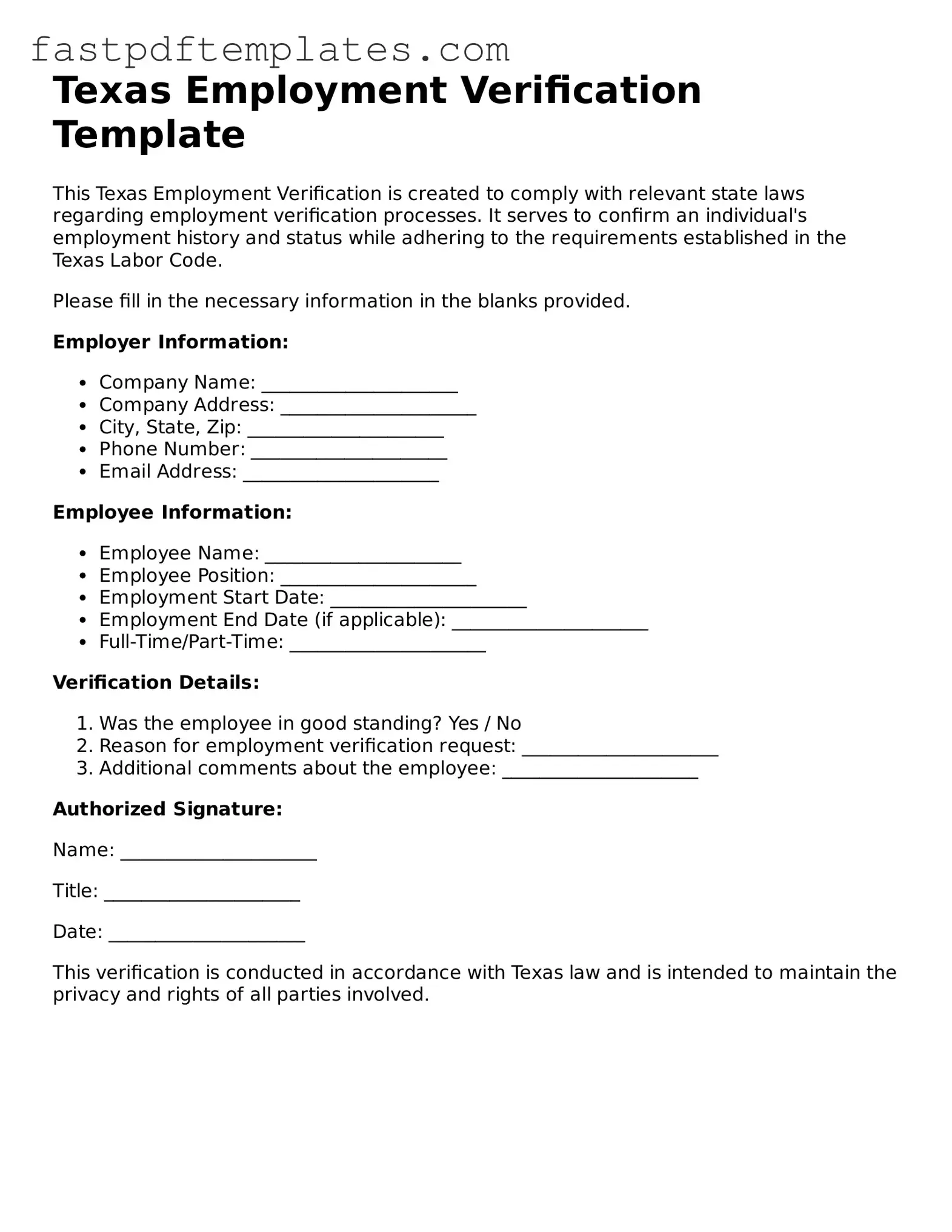The Texas Employment Verification form is similar to the I-9 Employment Eligibility Verification form, which is used nationwide. Both documents confirm an individual's eligibility to work in the United States. The I-9 requires employees to provide identification and employment authorization, while the Texas form typically focuses on verifying employment status with a specific employer. Both forms must be completed by employees and employers to ensure compliance with federal and state regulations.
Another comparable document is the W-2 Wage and Tax Statement. This form summarizes an employee's annual earnings and tax withholdings. While the Texas Employment Verification form verifies current employment, the W-2 provides a historical overview of an employee's earnings and tax contributions. Both documents serve essential purposes in employment records and financial reporting.
The Social Security Administration (SSA) also utilizes the SSA-89 Authorization for Release of Information. This form allows employers to verify an employee's Social Security number. Like the Texas Employment Verification form, it helps confirm an individual’s identity and employment eligibility. However, the SSA-89 focuses specifically on Social Security information, whereas the Texas form is broader in scope.
The IRS Form 4506-T, Request for Transcript of Tax Return, is another document that shares similarities. This form allows individuals to request a transcript of their tax returns, which can be used for income verification. Both forms assist in validating employment and income, though the IRS form specifically pertains to tax information rather than direct employment verification.
The Fair Credit Reporting Act (FCRA) compliance forms are also relevant. When employers conduct background checks, they often use these forms to obtain consent from employees. Like the Texas Employment Verification form, these documents ensure that employers follow legal protocols when verifying an employee’s history and qualifications.
The Employment Reference Check form is commonly used by employers to verify past employment and performance. This form collects information from previous employers about an applicant's work history. Similar to the Texas Employment Verification form, it aims to confirm an individual's employment status and reliability, although it focuses on past rather than current employment.
Additionally, the Form 1099-MISC is relevant for independent contractors. This form reports payments made to non-employees for services rendered. While the Texas Employment Verification form is for employees, both documents verify income and employment status in different contexts.
The State Unemployment Insurance (UI) Claim form also has similarities. This form is used to apply for unemployment benefits, which requires proof of previous employment. Both the UI Claim form and the Texas Employment Verification form validate an individual's work history, though the UI Claim focuses on eligibility for benefits.
The Employee Handbook Acknowledgment form serves a different purpose but is still related. This form confirms that an employee has received and understood the company’s policies. While it does not verify employment status, it is part of the documentation that supports an employee's relationship with the employer, similar to the Texas Employment Verification form.
Lastly, the Non-Disclosure Agreement (NDA) can be compared in terms of employment documentation. An NDA protects confidential information shared during employment. While the Texas Employment Verification form verifies employment status, the NDA secures the employer's proprietary information, ensuring that employees understand their obligations regarding confidentiality.
